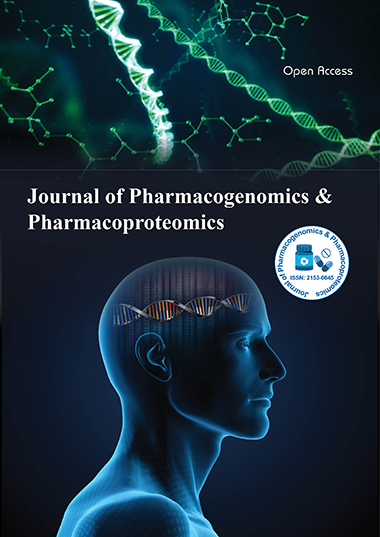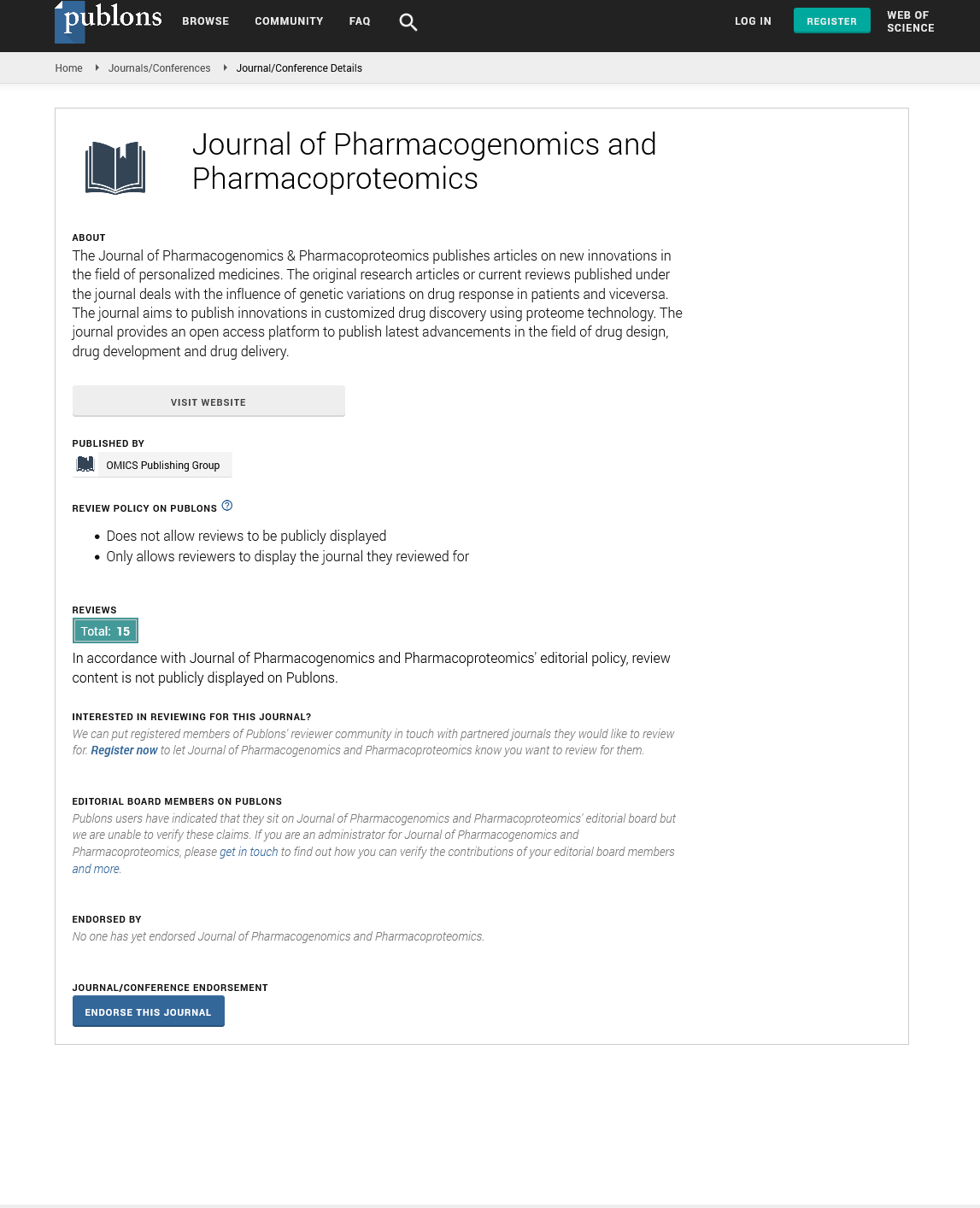Indexed In
- Open J Gate
- Genamics JournalSeek
- Academic Keys
- JournalTOCs
- ResearchBible
- Electronic Journals Library
- RefSeek
- Hamdard University
- EBSCO A-Z
- OCLC- WorldCat
- Proquest Summons
- SWB online catalog
- Virtual Library of Biology (vifabio)
- Publons
- MIAR
- Euro Pub
- Google Scholar
Useful Links
Share This Page
Journal Flyer

Open Access Journals
- Agri and Aquaculture
- Biochemistry
- Bioinformatics & Systems Biology
- Business & Management
- Chemistry
- Clinical Sciences
- Engineering
- Food & Nutrition
- General Science
- Genetics & Molecular Biology
- Immunology & Microbiology
- Medical Sciences
- Neuroscience & Psychology
- Nursing & Health Care
- Pharmaceutical Sciences
Opinion - (2022) Volume 13, Issue 5
Epigenomic Analysis of Preeclampsia in Human Placental Samples and Their Symptoms
Simoes Austin*Received: 01-Sep-2022, Manuscript No. JPP-22-18274 ; Editor assigned: 05-Sep-2022, Pre QC No. JPP-22-18274 (PQ); Reviewed: 19-Sep-2022, QC No. JPP-22-18274 ; Revised: 26-Sep-2022, Manuscript No. JPP-22-18274 (R); Published: 03-Oct-2022, DOI: 10.35248/2153-0645.22.13.025
Description
Preeclampsia is a complication of pregnancy preeclampsia can lead to elevated blood pressure, proteinuria a high level of protein in the urine that indicates kidney disorder other symptoms of organ damage. Preeclampsia typically develops in pregnant women whose blood pressure had previously been within the normal range after 20 weeks of pregnancy. Preeclampsia, if untreated, can result in significant, even fatal, problems for both the mother and the baby. The severity of the preeclampsia and the number of weeks pregnant determine when the baby will be delivered. Careful monitoring and drugs to decrease blood pressure and control problems are part of preeclampsia treatment before to delivery. Preeclampsia, also known as postpartum preeclampsia, can develop itself after a baby is delivered.
Originally intended to function as a complement to the human genome, the human exposome represents all exposures an individual has ever had in their lifetime. Given the diversity of individual stressors (chemical and non-chemical) and the extremely dynamic nature of many exposure events, the exposome, unlike the genome, can never be fully described for any individual. However, the development of tools for measuring large portions of the exposome has made great gains recently.
This identified five clusters of placental gene expression with at least three clinically significant etiological subtypes of PE, including "maternal," which included term and near-term deliveries of average-sized infants and placentas that appeared molecularly similar to normal healthy control samples; "canonical," which included preterm deliveries, low foetal weights, and signs of maternal malperfusion; and "immunological," which included severe foetal growth retardation. Cluster 5 also had a second subtype of PE placentas with chromosomal anomalies, which was confirmed by array-based Comparative Genomic Hybridization (aCGH) research, but it did not exhibit a clear clinical association. RNA is very unstable, frequently influenced by technical variation, and rarely successful as a therapeutic target, limiting its clinical utility, despite our significant progress in understanding the molecular variety observed across PE patients. We therefore suggest that these placentas incorporate additional levels of molecular data, such as DNA methylation, to make up for these limitations and to further our understanding of the molecular pathophysiology.
DNA methylation is a mitotically heritable epigenetic mark that the cell uses to regulate gene expression without changing the genetic sequence, despite the fact that the interaction between the two types of data is extremely complex. Given the flexibility for modification in the epigenome, these methylation events may also serve to provide insight into the environmental exposures sustained by the cell, and as potential biomarkers of early cellular transformations.
Symptoms of identifying feature in preeclampsia high blood pressure, proteinuria. Excess protein in urine (proteinuria) or other signs of kidney problems, decreased levels of platelets in blood (thrombocytopenia), increased liver enzymes that indicate liver problems, severe headaches, nausea or vomiting, pain in the upper belly, usually under the ribs on the right side, shortness of breath, caused by fluid in the lungs, changes in vision, including temporary loss of vision, blurred vision or light sensitivity. Edema and weight increase are common throughout healthy pregnancies. However, sudden weight gain or a sudden appearance of edema particularly in your face and hands may be a sign of preeclampsia.
Citation: Austin S (2022) Epigenomic Analysis of Preeclampsia in Human Placental Samples and Their Symptoms. J Pharmacogenom Pharmacoproteomics. 13:025.
Copyright: © 2022 Austin S. This is an open-access article distributed under the terms of the Creative Commons Attribution License, which permits unrestricted use, distribution, and reproduction in any medium, provided the original author and source are credited.

